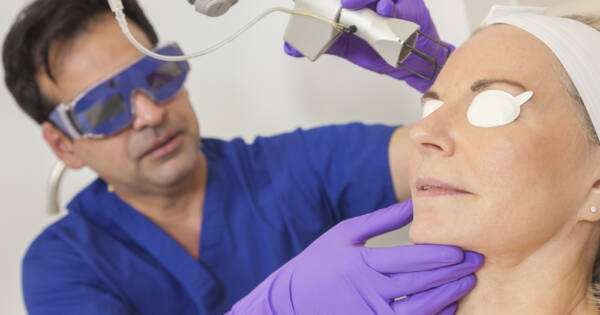Embarking on a hair transplant journey involves more than just the surgical procedure; it requires a comprehensive package that includes everything from initial consultations to long-term follow-up care. With advanced techniques, such as Follicular Unit Extraction (FUE), patients can achieve optimal results with minimal disruption to their daily lives. By understanding post-operative expectations and engaging in detailed aftercare, individuals can foster successful outcomes and embrace restored hair with confidence. Dive deeper into what makes these packages essential for a successful hair restoration experience.
Understanding the Hair Transplant Package
Undergoing a hair transplant is a significant decision for many individuals seeking restoration of hair density and confidence. A well-structured hair transplant package is crucial, as it encompasses both the procedure and the essential post-operative care to ensure optimal results. Hair transplant packages typically include an initial consultation, the surgical procedure itself, detailed aftercare instructions, and follow-up appointments. During consultations, personalized treatment plans are developed by analyzing individual hair loss patterns and discussing expectations.
Advanced techniques, such as Follicular Unit Extraction (FUE), are often included in these packages. FUE is a minimally invasive method that offers a quicker recovery time and avoids linear scars, making it a popular choice among patients who wish to return to their daily activities promptly without compromising their professional engagements. This approach emphasizes patient comfort, with procedures conducted in settings equipped with memory foam chairs to enhance the overall experience. The package may also address potential complications and expected discomforts, providing guidance on how to manage these effectively.
Immediate Post-Procedure Expectations
Understanding what to expect immediately after your hair transplant can alleviate anxiety and prepare you for the recovery journey. The initial 24 to 48 hours post-procedure requires careful management. Patients often experience mild swelling, redness, and discomfort around the recipient and donor areas. These symptoms generally subside within the first week as part of the body’s natural healing process. It is essential to follow aftercare instructions, such as avoiding direct water pressure on graft sites and using prescribed shampoos, to support graft survival and prevent infection.
Patients should rest adequately, avoid strenuous activities, and keep their heads elevated while sleeping to minimize swelling and prevent graft dislodgement. During this period, many patients might opt to take time off from work to facilitate recovery and allow any immediate post-surgical side effects to subside.
Managing the First Few Weeks
The first few weeks following a hair transplant are crucial for healing and establishing the foundation for long-term success. Pain and discomfort may intensify slightly around days three and four, at which point over-the-counter pain medications can be used as needed to maintain comfort. By the end of the first week, most scabs and crusts will have formed and naturally begin to fall off.
Patients might notice some hair shedding, which is a normal and expected phase of the hair growth cycle. Shedding typically occurs in both transplanted and adjacent areas and should not cause alarm. Gentle washing, avoiding harsh chemicals, and protecting the scalp from intense sunlight are critical during this stage to support healing.
By the two-week mark, swelling should have substantially reduced, though redness and itchiness may linger. This is a common stage in the recovery process, often referred to as the “ugly duckling phase” due to the patchy appearance of hair growth. Patience is vital, as the emerging hairs initially appear thin and wispy, gradually maturing over time as the grafts settle and hair thickens.
Long-Term Recovery and Expectations
Long-term recovery after a hair transplant involves continued hair growth and maturation for several months post-surgery. New hair growth typically begins two to three months after the transplant, becoming more prominent around the four-month mark. Patients can expect a noticeable hair growth spurt at around six months, with hair continuing to thicken and strengthen over time.
By nine to twelve months, the hair has usually settled sufficiently to allow styling and regular care practices, while final results are generally visible between twelve and eighteen months. This period marks the full maturity of the transplanted hair, characterized by restored thickness and improved hair quality and volume.
Regular follow-up appointments are integral throughout this extended recovery period to monitor progress and make any necessary adjustments to care plans. Surgeons provide valuable insights and support, ensuring the desired outcomes are achieved and maintained over time. Patients should maintain a healthy lifestyle, incorporating a balanced diet rich in essential nutrients to support ongoing hair health and sustainability.
Why You Should Learn More About Hair Transplants Today
Understanding what to expect after a hair transplant is paramount for anyone considering this procedure. Comprehensive knowledge of the recovery process helps set realistic expectations and prepares patients for their journey to hair restoration. With advanced techniques like FUE providing minimally invasive solutions, those seeking treatment can anticipate favorable outcomes with minimal impact on their daily lives.
A well-structured hair transplant package that includes thorough post-operative care and regular follow-ups is essential for success. By following post-operative instructions vigilantly and maintaining close communication with healthcare providers, patients can significantly enhance their recovery and achieve long-lasting results.




